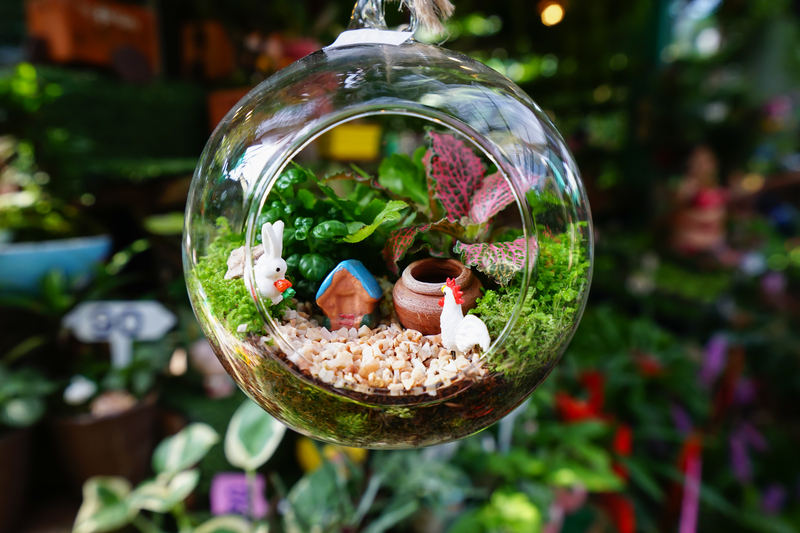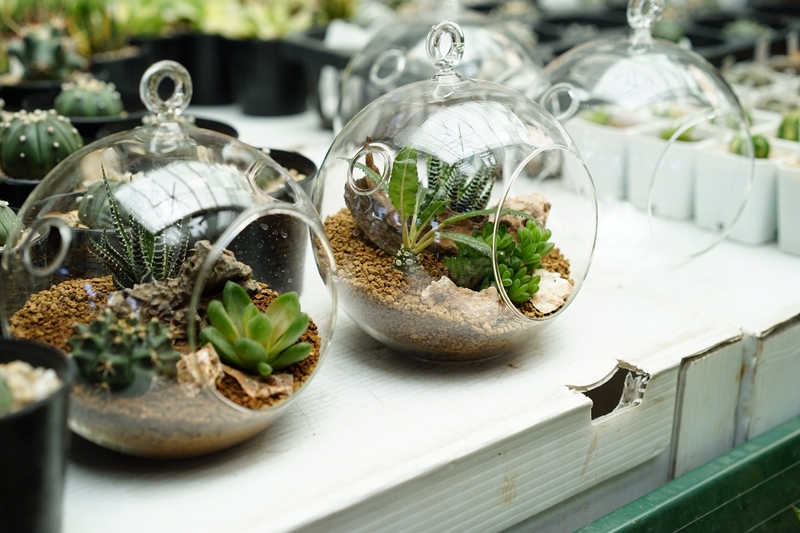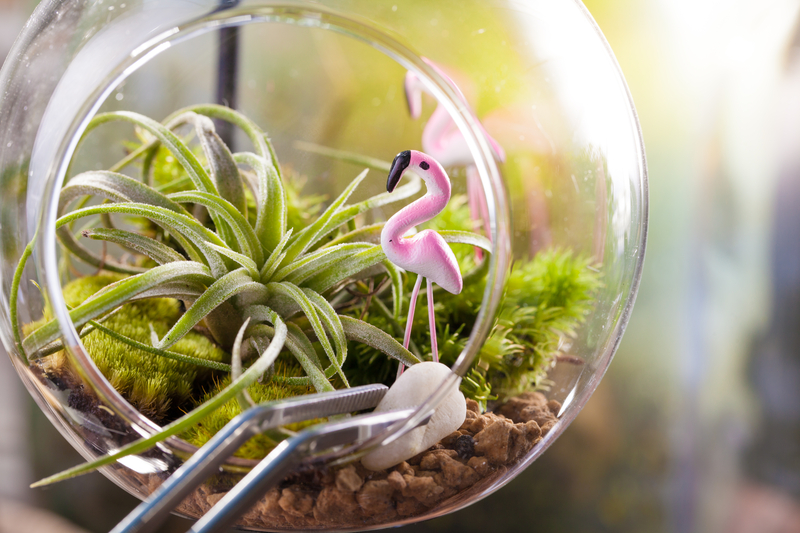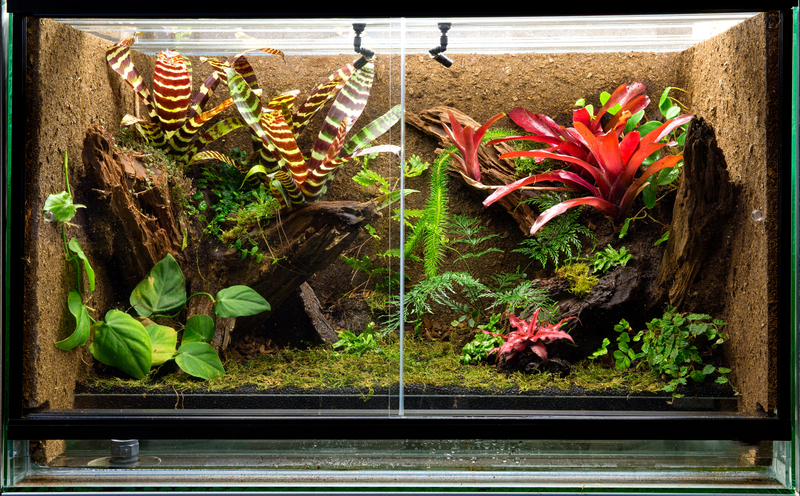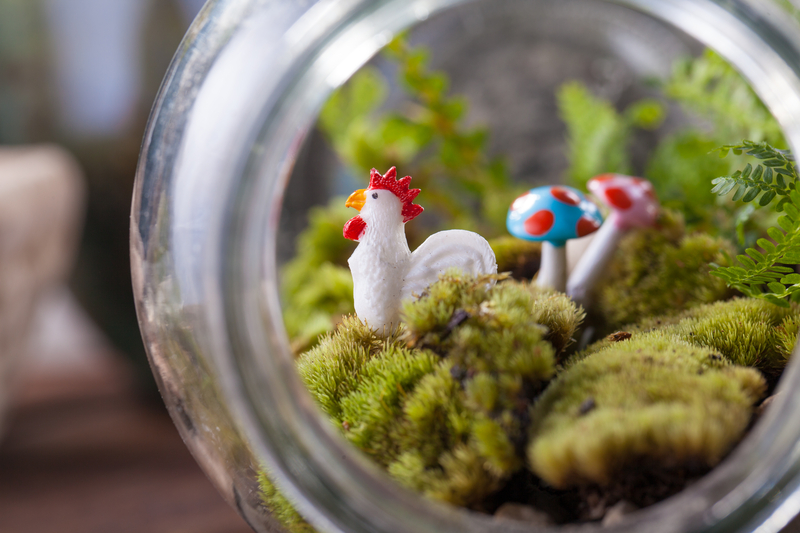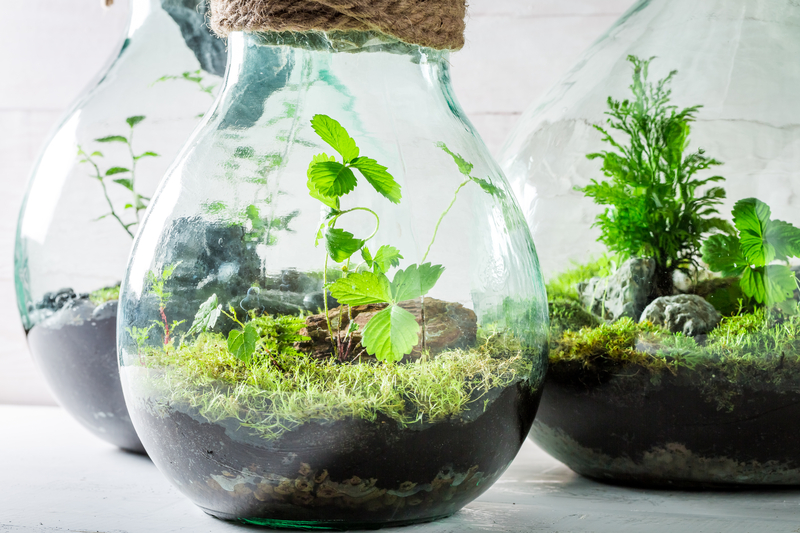Terrariums are great microenvironments — like mini-greenhouses — that allow houseplant enthusiasts to grow all kinds of plants that they couldn’t otherwise. They are trendy houseplants because they tend to be low maintenance and the arrangements are absolutely stunning! Terrariums are often set in small containers made of glass or plexiglass that are designed to create a humid environment for terrarium plants.
The humidity levels are key! But how do you keep a terrarium humid? And how do you measure the humidity level of your terrarium?
Terrarium plants need high humidity levels to survive, so it is vital to maintain the proper humidity levels by minimizing water evaporation and air circulation, implementing an appropriate misting system, using a suitable terrarium substrate, etc. Keep reading for more tips on keeping a terrarium humid so that your plants can thrive!
What is Humidity, and Why is it Important for Terrariums?
Humidity is a measure of the amount of water vapor in the air. Humidity levels are measured in percentages ranging from 0% to 100%, with most homes having about 40–50% humidity.
Most terrarium plants prefer humidity levels above 60%, while some enjoy as high as 80 or 90%! Therefore, indoor gardeners need to work to make sure that their terrariums stay more humid than the rest of their homes.
How Do you Check Humidity Levels in a Terrarium?
First things first — how do you know if your terrarium is humid enough or not? Humidity levels can change daily with the weather and other environmental factors in your home, so it is essential to regularly monitor the humidity levels in the terrarium and make sure that your plants are happy.
It can be challenging for us to detect small changes in humidity since we can’t see or feel them. Luckily, some devices can help! A hygrometer measures the humidity levels in your terrarium. Some hygrometers are also thermometers, so they can help you monitor the temperature and humidity of your terrarium all at once!
Devices like hygrometers are helpful but not required to keep a terrarium in your home. You can also look for clues like brown or fried leaves, soggy plants, or moisture droplets on the glass to help you gauge if your terrarium is too dry or too moist.
How Does Temperature Affect the Relative Humidity Levels in a Terrarium?
Do you ever feel dried out in the winter and sticky in the summer? That’s because the air temperature can affect how much moisture the air can hold. Warm air can hold a lot more moisture than cold air. Therefore, humidity levels tend to be higher in warm environments and lower in cold environments. We can feel these effects on our skin, and houseplants can feel it too!
How Do you Increase Humidity in a Terrarium?
The most straightforward way to increase the humidity in your terrarium is to use a spray bottle to gently and regularly mist the terrarium. Using a spray bottle will increase the humidity by directly adding water to the system. If you prefer something automated, you can also set up a sprayer or fogger to help regulate your humidity. If there is room in your terrarium for more plants, you can add more plants or sphagnum moss to help retain the moisture inside the terrarium.
You can also increase the humidity by increasing the room’s temperature or by adding a heat mat under the terrarium. However, heaters can dry out the air, so be sure to supplement with extra misting or a humidifier if you plan to keep your room warm.
Avoid letting a heater, fan, or draft blow directly over the terrarium, as these things can also dry out the terrarium. If you think your terrarium might be getting too dried out, consider moving it to a moist area of your homes like the bathroom or kitchen.
How Do you Decrease Humidity in a Terrarium?
Terrarium plants thrive in humid environments, but it is possible to have too high humidity levels. If there are water droplets on the glass of the terrarium or everything seems wet and soggy, that is a sign that there is too much moisture and the humidity levels are too high. If this happens, don’t worry. You can lower the humidity with these steps.
If possible, start by decreasing the room temperature with the terrarium. Cold air cannot hold the same amount of moisture as warm air, so the humidity levels will automatically decrease. Crack a window or turn on a fan or air conditioner if it is really warm. These things will also benefit from increasing the airflow in the room, causing the excess moisture to evaporate and leave the terrarium.
Conclusion: How to Keep a Terrarium Humid
Terrariums are a great way to keep live plants in your home if you live in a cool or dry climate. They can also be fun and exciting statement pieces for home gardeners looking for something a bit different.
While they might demand a bit of extra attention, they are easy plants to care for if you keep the humidity levels right. To keep your terrarium humid, keep it in a warm, moist area of the home, mist it regularly, and keep it away from any fans or drafts that can dry it out. Devices like a hygrometer or a fogger can be great tools to help you monitor and regularize the humidity inside your terrarium.
Similar Posts:
Are Eggshells Good for Plants?
What is the Difference Between Annual and Perennial Plants?
Why are Mushrooms Growing on my Houseplant?
Can You Repot Plants in the Winter?
Is Bong Water Good for Plants?
Are Humidifiers Good for Plants?
Is Rice Water Good for Plants?
Why is Plant Propagation Important?

